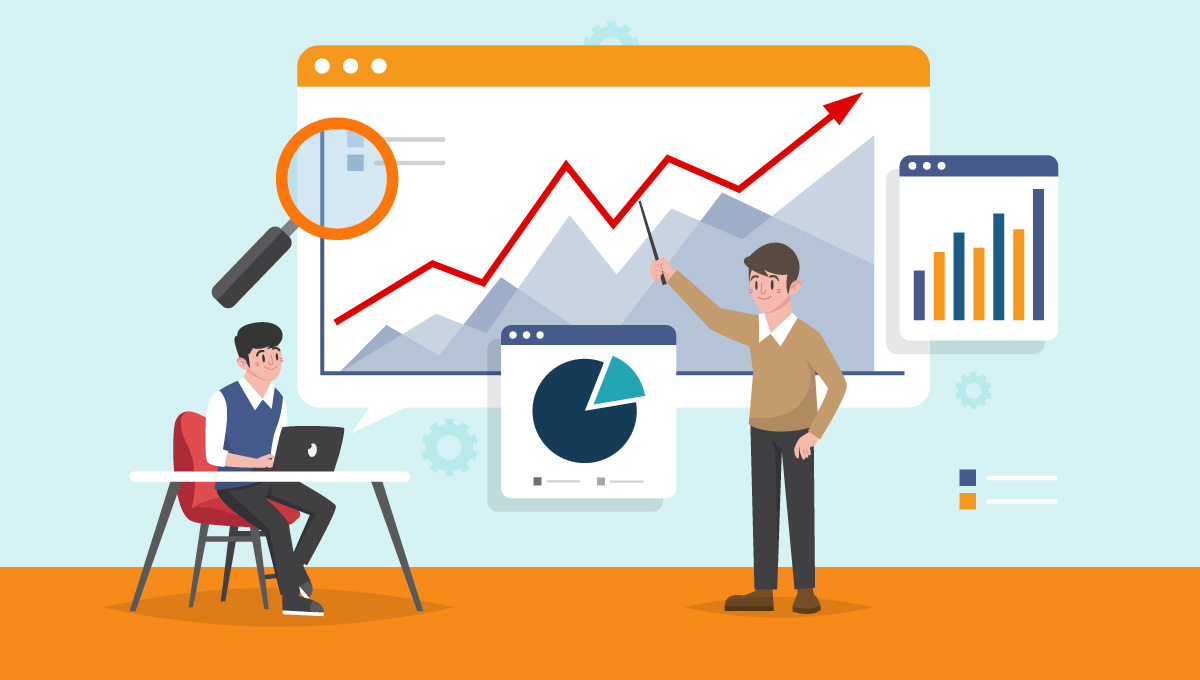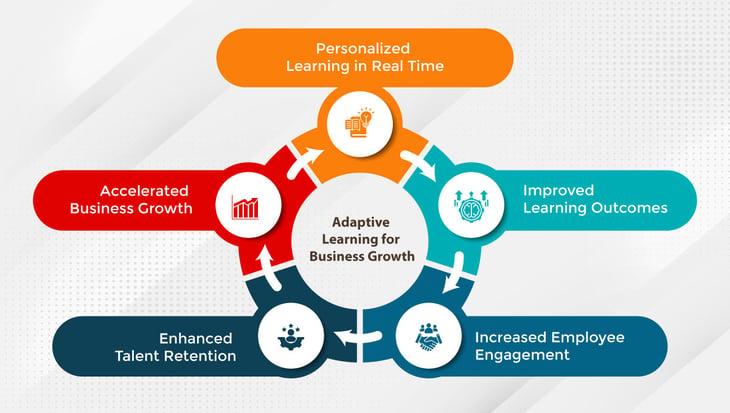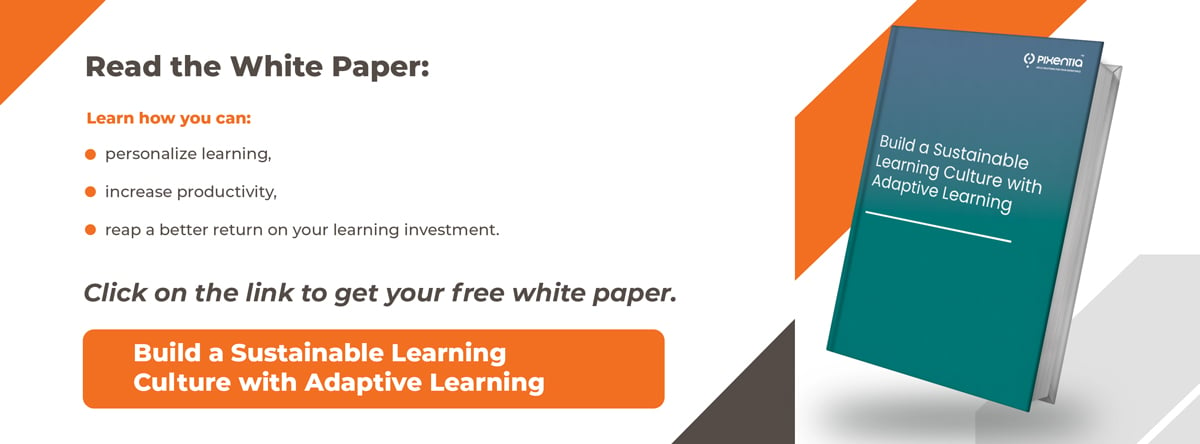
The academic world began experimenting with adaptive learning in 2010, and by 2013, businesses began to adopt it. At the time, building adaptive learning was a difficult, tedious process.
Now, adaptive and generative AI has given us AI-powered tools to provide an individualized experience that adapts to the learner in real time, but adaptive learning is only one of many ways to personalize learning. Linear and hard-wired methods are still effective for many learning tasks.
This blog is about the benefits of using learning analytics and artificial intelligence to develop the skills your workforce will need in the new world of skill-based learning and development.
How We Use Learning Analytics
Timely analytics allows analysis of every learning development, management, and delivery phase. Here's how to put it to work:
Support Learner Development
Analysis of learning patterns can help your learners understand their patterns and performance, and you can help them understand their learning patterns and provide feedback to improve their learning outcomes.
- Analysis enables you to identify areas for improvement and provide targeted support.
- Provide personalized feedback: Analytics enables you to provide personalized feedback to learners regarding their learning. This helps learners understand their strengths and weaknesses and adjust their learning strategies.
- Monitor employee skills: You can monitor to identify skill gaps, recommend courses, and predict future skill needs based on market trends.
- Improve the learning experience: Using analytics, you provide valuable insights into learners' behaviors, preferences, and performance. You can analyze the data to identify patterns and trends that help optimize the experience.
- Support data-driven decisions: You can highlight areas for learning improvement to support your choices, helping you increase learning effectiveness.
Recent Changes in Learning Analytics
One of the biggest challenges facing L&D has been to measure the ROI of learning. Collecting data about learners' behavior compared to business results gives us internal KPIs we can correlate to value growth KPIs.
- Key Performance Indicators (KPIs): We can capture Internal KPIs like product stickiness, product adoption, product growth, and product engagement.
- Learner-Centric Learning: LMSs and LXPs use xAPI data to collect, manage, store, track, and analyze data on micro-behaviors during learning, either directly or through a Learning Record Store (LRS).
- Big Data and AI: AI Model-driven analysis from assessments, individualized learning, and precision education will drive AI-enabled metrics. This data shapes learning experiences and outcomes as practitioners develop the AI tools and techniques to collect, analyze, and apply this data.
Personalized Learning Paths with AI
In the modern enterprise, L&D increasingly relies on AI-based adaptive learning technology to create more personalized and effective training experiences.
L&D isn't immune to AI's hype and fear-mongering, but those who must guide, control, and govern it are learning how to use it to make work faster, better, and easier to accomplish. The workable answer is AI governance and ethics, which should be a component of your enterprise governance.
Let's explore how L&D can use AI to make adaptive learning a powerful tool for creating compelling and engaging learning.
- Individualized Learning Experiences: AI drives the "adaptive" aspect of learning development, and once your technology providers have created a functional AI model integrated with your talent management technology, you'll be able to create learning experiences based on each learner's unique abilities and needs.
- Dynamic Adjustments: AI and graph computing have given us the power to capture and analyze data with a trillion-fold power and capacity over what was previously possible. We can adjust the level, pacing, and content on the fly, keeping our learners engaged.
- Identifying Knowledge Gaps: AI captures everyone's gaps and proficiencies to deliver the content needed to close the gaps and breeze past what they don't need.
- Real-time Feedback. We use AI and Machine Learning (ML) to personalize learning and provide real-time feedback to learners. Known as adaptive learning, the technology leverages AI and algorithms to adjust the learning experience based on a learner's performance, interests, and needs.
The Future of Instructional Design
With AI-driven technology and the progression of technology in delivering learning, the future of instructional design is here as adaptive learning is about to take innovative steps forward. Instructional designers can focus on meaningful lessons and progression through the learning path and optimize the impact.
AI-based adaptive learning technology is revolutionizing learning in modern business, enabling more personalized and compelling learning experiences. As we continue to embrace this transformative technology, we can look forward to an engaging, adaptive, and more effective future of learning.
How Does Adaptive Learning Accelerate Business Growth?
Adaptive learning can significantly impact business results through a sequence of effects:
- Personalized One-to-One Instruction: The modern AI-driven approach to adaptive learning uses machine learning and algorithms to personalize the learning experience for each person. Unlike the instructor-driven method, it adjusts the content, pace, and difficulty level in real time based on the learner's performance and progress.
- Improved Learning Outcomes: Because the learning experience adjusts to each person, they understand and retain the information faster. This leads to improved learning outcomes and time efficiency.
- Increased Employee Engagement: Employees who feel they are making progress are more likely to be engaged in learning. This increased engagement leads to better knowledge retention and job performance.
- Enhanced Talent Retention: Employees who sense you're investing in their personal and professional development are more likely to stay with the company.
- Business Growth: With a more skilled, knowledgeable, and engaged workforce, you're better equipped to innovate, meet customer needs, and adapt to changes in the market. It can lead to increased competitiveness and business growth. Coupling it with leadership and innovative internal mobility will make you more successful.
AI-driven adaptive learning can significantly impact business results by improving individual learning outcomes, increasing employee engagement and retention, and ultimately driving business growth.
Further Reading
Why Adaptive Blended Learning Is the Future of Workforce Training
How Adaptive Learning Can Overcome the Real Skills Shortage
About PixentiaPixentia is a full-service technology company dedicated to helping clients solve business problems, improve the capability of their people, and achieve better results.


